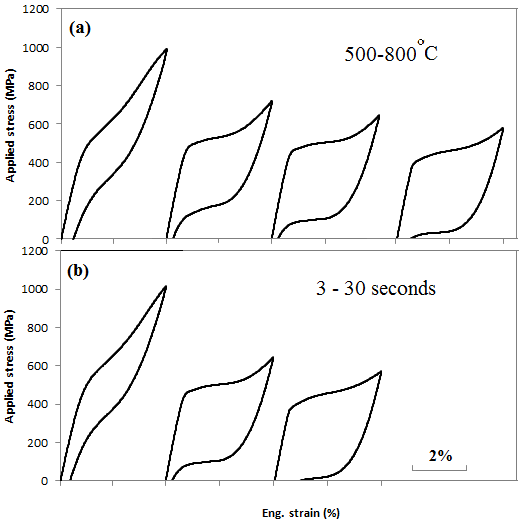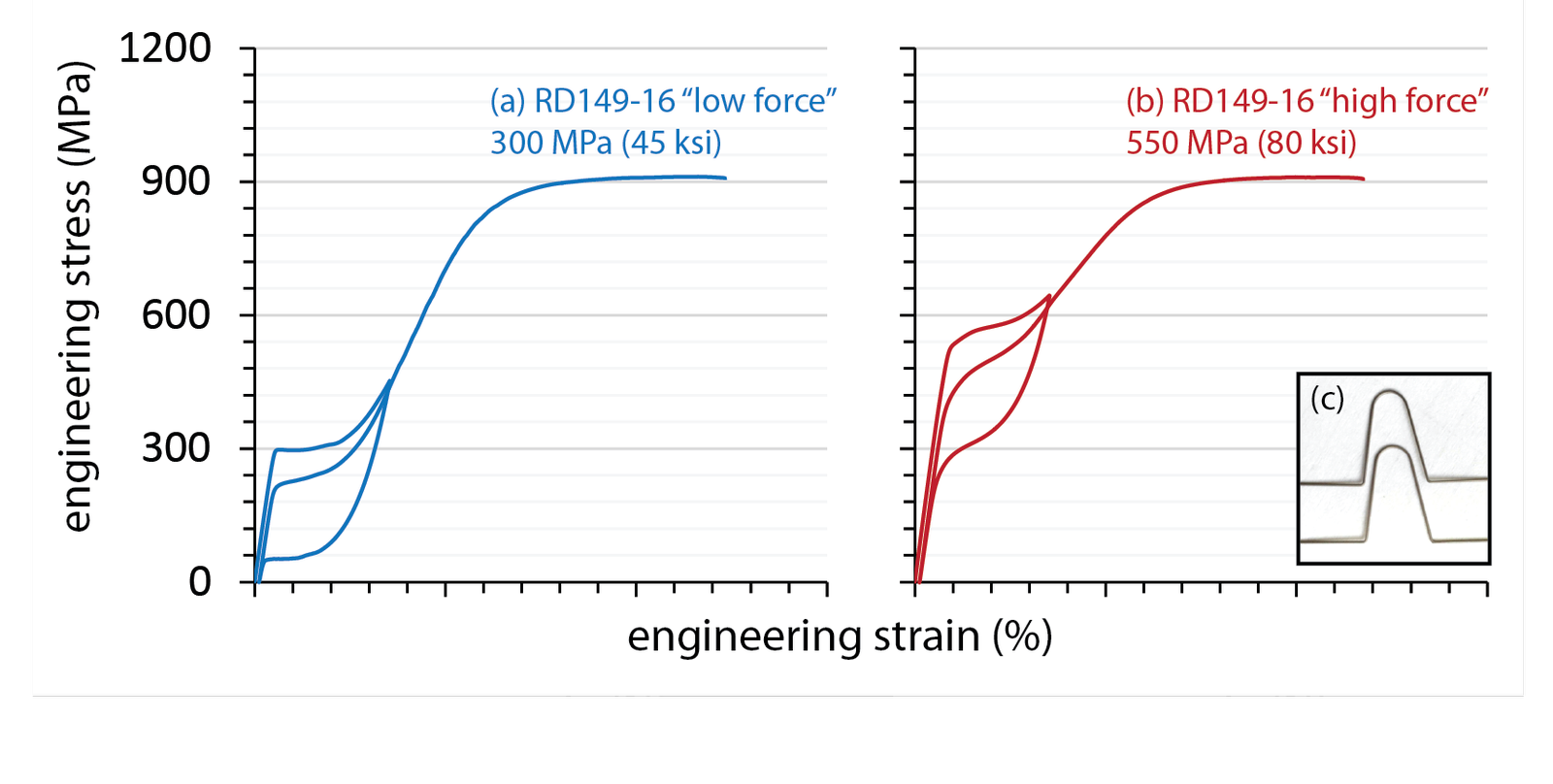Services
Simplify your process
J.E. Schaffer, Ph.D., Senior Research and Development Engineer & S. Cai, PhD, Research and Development Engineer
In our July 2015 installment [1], we discussed Fort Wayne Metals’ recent development of a beta titanium, nickel-free superelastic alloy. At the time, as shown in Figure 1 below, we were able to design excellent shape setting response in linear wire segments, e.g. for applications such as kink-resistant guidewire and stylets. Straight shapeset geometries were achieved through conventional stress-annealing of a suspended wire segment as well as continuous reel-to-reel wire lengths. On the contrary, complex, e.g. Nitinol-like, wire forms require contact-fixtures as well as alternative heating modes and atmospheres that increase performance-specific design complexity. More recent developments, highlighted briefly in Figure 2, include specific processing techniques to shape set the same Ni-free alloy (code named RD149-16) into functional forms with varied mechanical behavior. Such forms can be designed and engineered in a “nitinol-like manner” to serve as dental files, orthodontic arch wires, textiles for stents, aneurysm-filling scaffolds, and other medical device forms where Nitinol is currently used.

Figure 1 – Elastic property tuning by shape-setting a single composition of beta Ti alloys at various temperature and time, from [1].

Figure 2 – Shape set processing results in Ni-free titanium beta alloy “RD149-16” showing (a) low plateau stress “low force” tuning; (b) high plateau stress “high force” tuning; and (c) a simple multi radius shape set form using 0.40 mm (0.016 in) wire with small and large bend radii of 0.50 and 3 mm respectively.
We welcome your next challenge! Fort Wayne Metals is your partner in not only alloy design, but also function-specific processing and product development. Our strength lies in many years’ hands-on experiences as well as our fundamental knowledge of material science and mechanical engineering [2-5].
[1] Bi-monthly Update: July 2015
Click here to see previous highlights.
Disclaimer: Our monthly highlights are sneak peeks of what our R & D department is working on. This does not mean we have what is referenced above ready for manufacturing.
J.E. Schaffer, Ph.D., Senior Research and Development Engineer & S. Cai, PhD, Research and Development Engineer
In our July 2015 installment [1], we discussed Fort Wayne Metals’ recent development of a beta titanium, nickel-free superelastic alloy. At the time, as shown in Figure 1 below, we were able to design excellent shape setting response in linear wire segments, e.g. for applications such as kink-resistant guidewire and stylets. Straight shapeset geometries were achieved through conventional stress-annealing of a suspended wire segment as well as continuous reel-to-reel wire lengths. On the contrary, complex, e.g. Nitinol-like, wire forms require contact-fixtures as well as alternative heating modes and atmospheres that increase performance-specific design complexity. More recent developments, highlighted briefly in Figure 2, include specific processing techniques to shape set the same Ni-free alloy (code named RD149-16) into functional forms with varied mechanical behavior. Such forms can be designed and engineered in a “nitinol-like manner” to serve as dental files, orthodontic arch wires, textiles for stents, aneurysm-filling scaffolds, and other medical device forms where Nitinol is currently used.

Figure 1 – Elastic property tuning by shape-setting a single composition of beta Ti alloys at various temperature and time, from [1].

Figure 2 – Shape set processing results in Ni-free titanium beta alloy “RD149-16” showing (a) low plateau stress “low force” tuning; (b) high plateau stress “high force” tuning; and (c) a simple multi radius shape set form using 0.40 mm (0.016 in) wire with small and large bend radii of 0.50 and 3 mm respectively.
We welcome your next challenge! Fort Wayne Metals is your partner in not only alloy design, but also function-specific processing and product development. Our strength lies in many years’ hands-on experiences as well as our fundamental knowledge of material science and mechanical engineering [2-5].
[1] Bi-monthly Update: July 2015
Click here to see previous highlights.
Disclaimer: Our monthly highlights are sneak peeks of what our R & D department is working on. This does not mean we have what is referenced above ready for manufacturing.